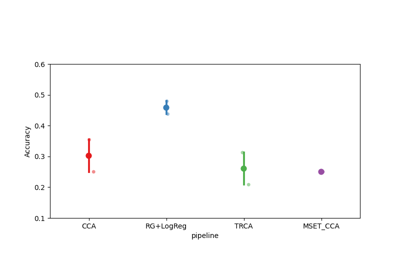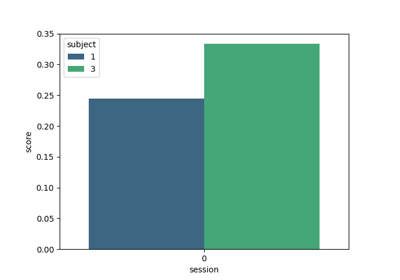moabb.datasets.Kalunga2016#
- class moabb.datasets.Kalunga2016[source]#
SSVEP Exo dataset.
PapersWithCode leaderboard: https://paperswithcode.com/dataset/kalunga2016-moabb
Dataset summary
#Subj
12
#Chan
8
#Classes
4
#Trials / class
16
Trials length
2 s
Freq
256 Hz
#Sessions
1
SSVEP dataset from E. Kalunga PhD in University of Versailles [1].
The datasets contains recording from 12 male and female subjects aged between 20 and 28 years. Informed consent was obtained from all subjects, each one has signed a form attesting her or his consent. The subject sits in an electric wheelchair, his right upper limb is resting on the exoskeleton. The exoskeleton is functional but is not used during the recording of this experiment.
A panel of size 20x30 cm is attached on the left side of the chair, with 3 groups of 4 LEDs blinking at different frequencies. Even if the panel is on the left side, the user could see it without moving its head. The subjects were asked to sit comfortably in the wheelchair and to follow the auditory instructions, they could move and blink freely.
A sequence of trials is proposed to the user. A trial begin by an audio cue indicating which LED to focus on, or to focus on a fixation point set at an equal distance from all LEDs for the reject class. A trial lasts 5 seconds and there is a 3 second pause between each trial. The evaluation is conducted during a session consisting of 32 trials, with 8 trials for each frequency (13Hz, 17Hz and 21Hz) and 8 trials for the reject class, i.e. when the subject is not focusing on any specific blinking LED.
There is between 2 and 5 sessions for each user, recorded on different days, by the same operators, on the same hardware and in the same conditions.
Notes
Note
Kalunga2016was previously namedSSVEPExo.SSVEPExowill be removed in version 1.1.The events notation 17Hz and 21Hz were swapped after an investigation conducted by ponpopon at Github.
The dataset includes recordings from 12 healthy subjects.
Added in version 1.2.0.
References
[1]Emmanuel K. Kalunga, Sylvain Chevallier, Quentin Barthelemy. “Online SSVEP-based BCI using Riemannian Geometry”. Neurocomputing, 2016. arXiv report: https://arxiv.org/abs/1501.03227
- data_path(subject, path=None, force_update=False, update_path=None, verbose=None)[source]#
Get path to local copy of a subject data.
- Parameters:
subject (int) – Number of subject to use
path (None | str) – Location of where to look for the data storing location. If None, the environment variable or config parameter
MNE_DATASETS_(dataset)_PATHis used. If it doesn’t exist, the “~/mne_data” directory is used. If the dataset is not found under the given path, the data will be automatically downloaded to the specified folder.force_update (bool) – Force update of the dataset even if a local copy exists.
update_path (bool | None Deprecated) – If True, set the MNE_DATASETS_(dataset)_PATH in mne-python config to the given path. If None, the user is prompted.
verbose (bool, str, int, or None) – If not None, override default verbose level (see
mne.verbose()).
- Returns:
path – Local path to the given data file. This path is contained inside a list of length one, for compatibility.
- Return type:

